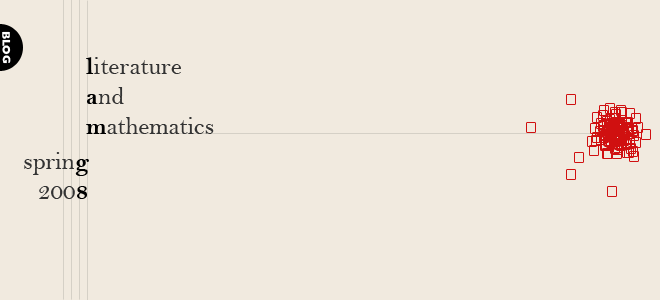I don't think I'm alone in saying that the conclusion to Vas is less than climactic. The story revolves around Square's decision to get a vasectomy and then ends...with him getting one. Interesting...huh? The interwoven texts, figures, charts, etc. bring about a different style to thinking about genetic engineering and are very intriguing but they leave me asking questions as to what purpose and relevance they serve to the story itself.
If the story was simply based around Square's decision, what need was there to include eugenics and genetic manipulation? Does the story about the woman who turned herself into a Barbie on p.260 really have any significance?
This story has definitely enlightened me as to where eugenics has started and the path it seems to be going down. It's kind of scary to think about the future of genetic modification and lengths people will go to to achieve "perfection". Maybe this is what Tomasula planned all along and I'm looking too far into it. But what does any of the information presented have to do with Square's dilemma?
Overall, I somewhat enjoyed reading Vas. I feel extremely knowledgeable in the area of eugenics since this is the third class I've had that has covered this controversial topic. I also loved how different and confusing the text was to read. The challenge to look beyond the text to decipher the author's true intent was never-ending. However, the fact that there are so many questions left unanswered makes me wonder why this book was written in the first place. Will we ever really know what to make of the novel as a whole? Maybe... maybe not. Will I ever truly understand the meaning of Vas? No way, Jose!
Friday, February 29, 2008
Happily Ever After?
Posted by
Brian M
at
3:49 PM
![]()
![]()
Subscribe to:
Post Comments (Atom)

4 comments:
I was dissapointed as well. I wish we could have seen where the progression of eugenics in flatland ended up.
Yes. The story of the real-life Barbie on page 260 has significance. I'm definitely having it be significant since my paper is on page 260 and 261 only! That article was published in the Enquirer in 1993. The Enquirer is known for highlighting crazy and freaky people/stories. In 1993 getting that much plastic surgery was considered "freaky". Now look on page 261 you will see the data for the amount of plastic surgery that was done in 1999. Across the two pages, linking the article and that data is the sentence, “Harmonizing with Cindy Jackson who had over 20 operations to turn herself into a living Barbie doll.” Tomasula is showing the how something that was once considered “freaky” is now the mainstream. I think he is also showing how we are transforming ourselves into plastic creatures (body parts made in China) and are becoming a part of mass production.
Thanks for clearing that up. I think it's ironic that the ideal of being or becoming a real-life "Barbie" is actually freakish in itself.
I still find that Barbie story pretty freaky. And I also agree that there were too many questions left unanswered. Although it would defeat the purpose of finding out the answers on our own, where are the sparknotes when you need them?
Post a Comment